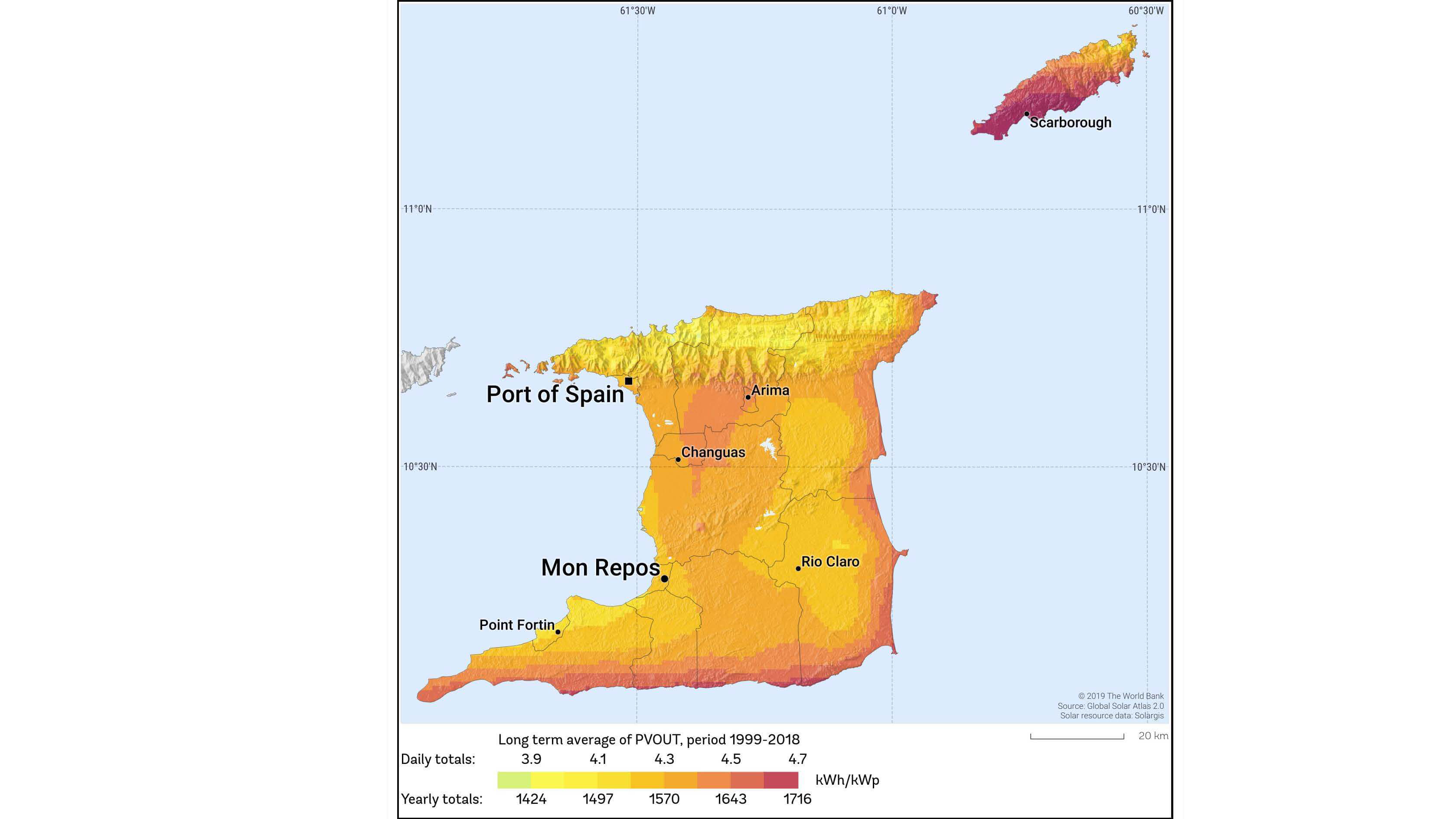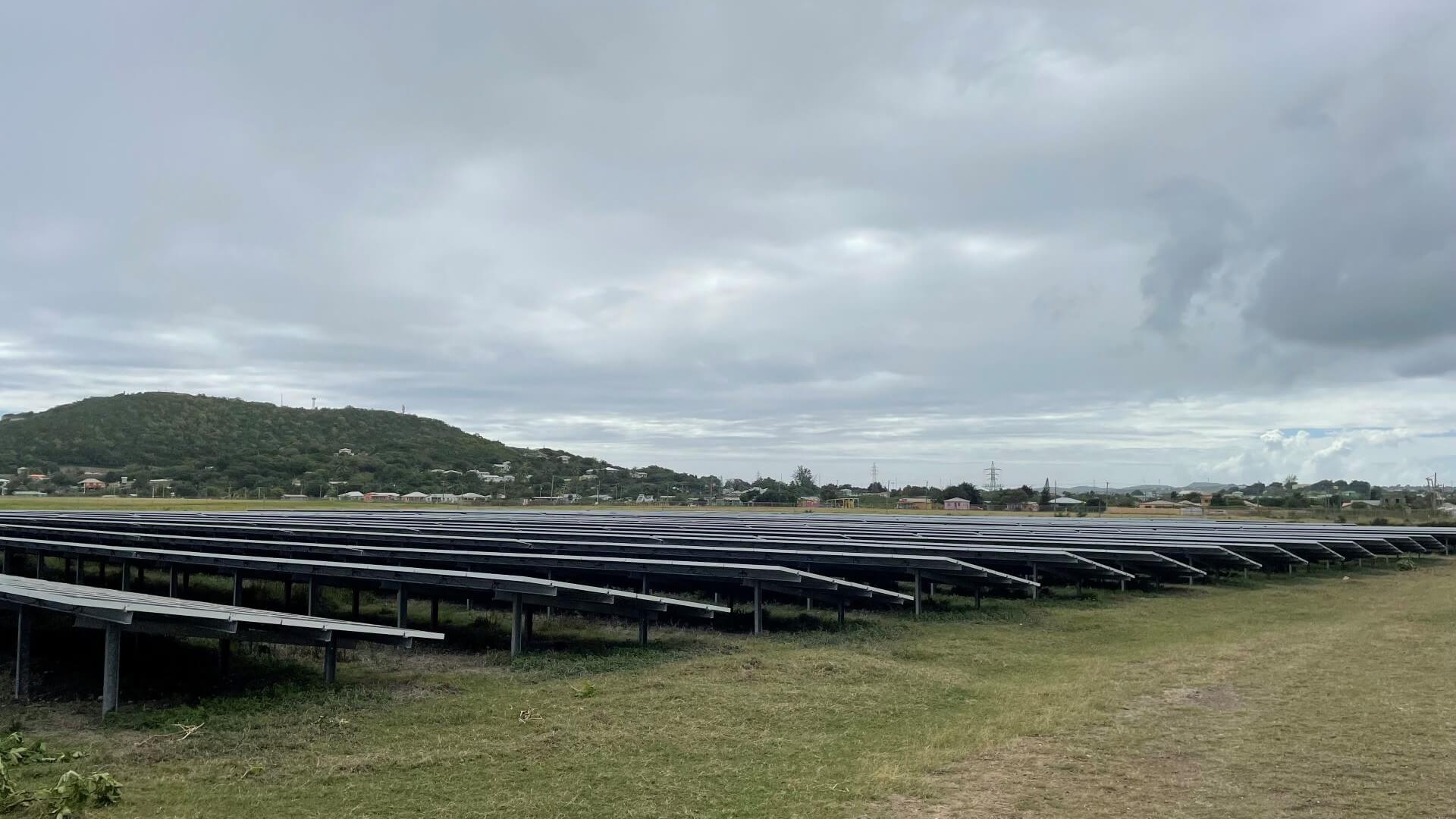UPDATED 1 Sept: The EI library in London is temporarily closed to the public, as a precautionary measure in light of the ongoing COVID-19 situation. The Knowledge Service will still be answering email queries via email , or via live chats during working hours (09:15-17:00 GMT). Our e-library is always open for members here: eLibrary , for full-text access to over 200 e-books and millions of articles. Thank you for your patience.
New Energy World™
New Energy World™ embraces the whole energy industry as it connects and converges to address the decarbonisation challenge. It covers progress being made across the industry, from the dynamics under way to reduce emissions in oil and gas, through improvements to the efficiency of energy conversion and use, to cutting-edge initiatives in renewable and low-carbon technologies.
The Caribbean islands are seeking to harness plentiful solar power in ambitious projects aimed at cutting electricity costs and boosting energy independence, report Juhel Browne in Port of Spain, Trinidad; Gemma Handy in St John’s, Antigua; and Poorna Rodrigo.
Caribbean island states are looking to harness their natural advantage in bounteous sunlight to expand solar power, boosting their energy independence while reducing the cost of energy as gas and oil prices rise.
Trinidad & Tobago
Even in oil and gas-rich Trinidad & Tobago, consumers have been feeling the energy pinch, facing increases in their electricity bills in 2023. So, while the country’s Regulated Industries Commission (RIC) is holding public consultations on proposed new electricity tariffs, the government of Prime Minister Dr Keith Rowley is looking at alternative sources to the country’s natural gas-fired power plants.
This includes an agreement between the government and a consortium of BP solar energy subsidiary Lightsource BP and Shell to build a 112.2 MW solar utility project, dubbed Project Lara. This will include two solar power farms, one near Brechin Castle, in east-central Trinidad, and the other near Trinicity, east of Port of Spain in northern Trinidad.
Speaking in January 2023 at a Trinidad & Tobago energy conference, Dr Rowley said construction was scheduled to begin in 1Q2023, for full operation by 4Q2024, to meet 8% of Trinidad’s power generation requirements. ‘It is the government’s stated objective to increase power from renewables to meet 30% of the country’s requirements,’ added the Prime Minister.
While this will enable Trinidad & Tobago to retire some ageing fossil fuel power capacity, Dr Rowley stressed that ‘the transition to renewables is not without its challenges’, pointing out that ‘prices for wind and solar power increased nearly 30% in the past year due to global supply chain issues’.
With the country able to keep its fossil fuel energy costs low through substantial local natural gas production (2.58bn cf/d in 2021 according to Statista), solar power faces real competition in this twin island state. ‘The outlook for renewables is technically promising but widespread cheap energy from these myriad sources is still some time away,’ noted Dr Rowley.
Meanwhile, a Trinidad electrical engineer with solar experience says the project ‘would require meticulous planning and coordination by various internal and external stakeholders… there could also be a procurement challenge since some materials or equipment have relatively long lead times (two years or more)’. He adds that ‘changes have to be made to the local electrical grid’ to accommodate the solar project and that ‘a technical study... would also have to be conducted [before] starting the project and procurement of materials’.
Once online, however, he says expanded solar power would enable the government to limit Trinidad natural gas supplied to local power producers, increasing available supplies for petrochemical, ammonia, methanol and urea plants. It would also boost power reliability by offering alternative sources should there be an interruption in natural gas supplies to power plants or a major fault on Trinidad’s electrical grid.

Fig 1: Estimated solar photovoltaic (PV) power generation potential in Trinidad
Source: The World Bank, Global Solar Atlas 2.0, Solargis
Solar in Barbados
Similar moves are underway to boost solar power production and use in Barbados.
In August 2022, a Householders’ Right to Renewable Energy Policy came into effect in Barbados which meant that anyone installing domestic renewable energy systems up to 10 kW no longer had to go through the lengthy and costly process of procuring a licence. This includes solar power, which currently is the focus of all relevant projects – although in theory all other renewable energy sources could be covered. The government has set aside capacity on the island’s electricity grid for such domestic renewable energy systems.
This has prompted solar power expansion plans, for instance by Williams Industries, which pioneered photovoltaics (PV) in Barbados 40 years ago. Back then PV parts were prohibitively expensive and it was not until Barbados Light and Power Company (BLPC) – the island’s sole electricity provider – introduced a programme in 2010 allowing customers to sell any excess electricity generated from renewable sources that the sector took off.
This year, Williams Industries’ Chairman Ralph Williams has set a target of converting 5,000 private homes on the island to solar energy – its population is currently 281,000. At present, around 12% of the island’s electricity comes from solar power, with the remainder from fossil fuels.
‘Our aim is to continue working to help get Barbados powered entirely from renewable energy’ under the Barbados National Energy Policy, he says. And he notes that: ‘The government set a target to do that by 2030. That’s not achievable at the rate they’re going, and we’ve had lots of stumbling blocks.’ One major hurdle is that the BLPC so far lacks the power storage required to ensure a regular flow of renewable energy, according to Williams.
He says the Barbados Fair Trading Commission needs to establish a rate structure, where it declares a price per kWh of storage installed to level out the variable inputs from solar and wind power, and to encourage investment in storage. ‘Until there’s a rate structure, it’s just not bankable,’ explains Williams. Another problem has been rising costs in solar power components. Williams Industries imports most of its PV materials from China: ‘We have had logistical challenges because of the pandemic – and the price of the components went up by around 15% – but things are straightening out now,’ he says.
But should solar power expansion in Barbados succeed, electricity bills should fall by around a third, predicts Williams. Householders in Barbados currently pay around $0.33/kWh.
‘Right now, Barbados is spending $170mn/y in oil to generate electricity,’ according to Williams. He adds: ‘We don’t want to see the continued bleeding of foreign exchange to buy energy when the sun delivers more energy to the Earth in one day than the world uses in a whole year. All the foreign exchange required to buy the components for the photovoltaic installation can be repaid by savings in imported oil alone in three years or less.’
Barbados has limited oil and natural gas production and relies on imports.
Should solar power expansion in Barbados succeed, electricity bills should fall by around a third – predicts Charles Williams, Chairman, Williams Industries
Antigua & Barbuda
Steps are also underway in Antigua & Barbuda to reduce reliance on fossil fuels. A recently constructed solar farm in Barbuda has helped stabilise electricity supplies on this small and lightly populated island since coming onstream in September 2022. Power outages across Antigua & Barbuda are common, particularly in Barbuda where infrastructure is still recovering from 2017’s Hurricane Irma.
The $5.6mn solar farm was a collaboration between the Antigua & Barbuda government, which spent $1mn, a United Arab Emirates $4mn grant and $500,000 from New Zealand. The plant should displace about 260,000 litres of diesel fuel annually, offsetting 690 tonnes of CO2. The country has historically imported all its fuel oil and is targeting 100% reliance on renewable energy by 2030.
 The 3 MWp sun2live solar energy farm located at VC Bird International Airport in Antigua
The 3 MWp sun2live solar energy farm located at VC Bird International Airport in Antigua
Photo: Gemma Handy
The International Renewable Energy Agency (IRENA) put forward proposals in 2021 that suggested the most affordable transition plan would comprise 90% renewable power generation from solar and wind, with the remainder met by green hydrogen. Specifically, it suggested 92 MW of rooftop solar on approximately 30,000 households, 122 MW of ground-mounted solar and 117 MW of wind, along with 138 MWh of energy storage and a 100 MW hydrogen electrolyser and 40 MW fuel cell. This mix would reduce Antigua & Barbuda’s cost of electricity from around $0.15/kWh today to $0.09/kWh by 2030.
This twin island nation has two solar farms presently in operation – a 3 MW facility next to the international airport and a 4 MW plant in Bethesda in Antigua’s south-east. A further 3 MW is generated via solar panel rooftops on private homes and some businesses. ‘At maximum performance, solar accounts for 11 MW of the peak load of 57 MW – or around 5%,’ according to Sharifa George, spokesperson for the state-owned Antigua Public Utilities Authority (APUA).
Plans by the West Indies Oil Company (WIOC) – a regional petroleum distribution firm in which the Antigua & Barbuda government has a 51% stake – to produce renewable energy are also gathering pace. Last year, WIOC was given permission by the Antiguan Cabinet to construct a 10 MW solar plant.
The WIOC’s IT Manager Shemrick Rodney says: ‘We are trying to create affordable solar kits for private homes and businesses, which include all the parts one would need, from the panels to consumption meters.’ However, he concedes it could prove tough to get householders already struggling with a relatively high cost of living to make solar power investments.
Jamaica
Meanwhile, Jamaica has been innovating by focusing on harnessing floating solar energy. The Mona reservoir floating solar project announced in October 2022 that it is expected to generate $6.46mn in annual savings from 2024 for the country’s National Water Commission (NWC). Moreover, the NWC will receive $25,000 for leasing out 100 acres of its water surface for solar power and four acres of land for the installation of inverters, battery storage and grid stability equipment. As well as generating 45 MW, the project will decrease evaporation from the reservoir and algae growth.
Jamaica-based sustainability firm ECHOS Consulting CEO Richard A May calls the Mona Reservoir project ‘a wonderful idea’. He says that finding land ‘for a project of this scale is not easy’, hence utilising a water surface makes sense.
There are also plans to charge buses run by the government-owned public transportation company Montego Bay Metro using floating solar. A study entitled the ‘Montego Bay Bus Fleet Electrification Business Case’ published in December 2022 argues the plan would be the lowest cost zero carbon solution for the country’s ageing fleet of diesel buses. The report identifies ‘battery electric buses charged with electricity from floating solar PV as the best option for achieving that goal’. Again, innovative use of water features is a key – with floating solar panels to be installed on the Bogue wastewater treatment ponds close to the Montego Bay Metro bus depot, ‘with power transmitted directly to the MBM bus depot’, according to the report.
With such imaginative projects combined with endless sunlight and heat, the Caribbean solar power sector may have a very bright future.
